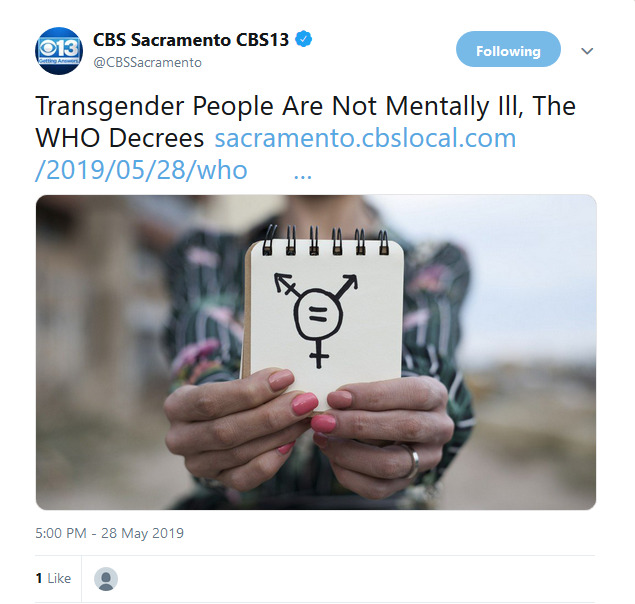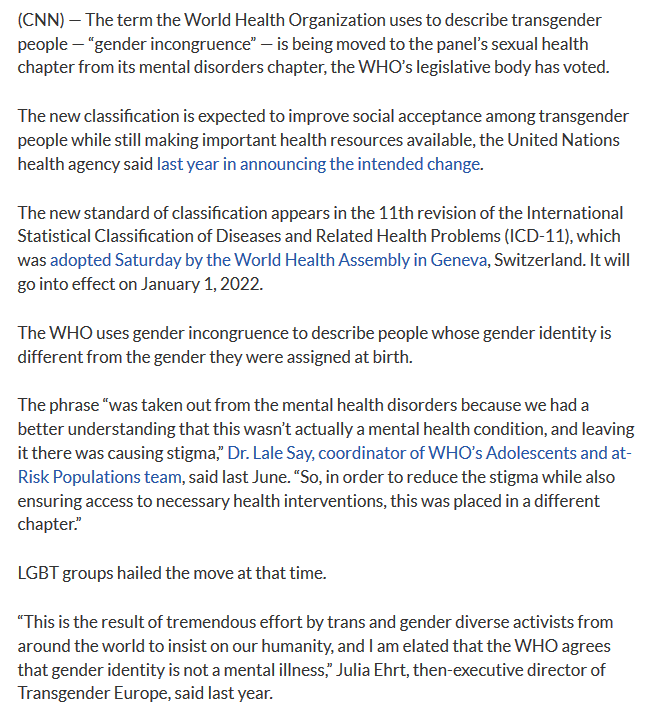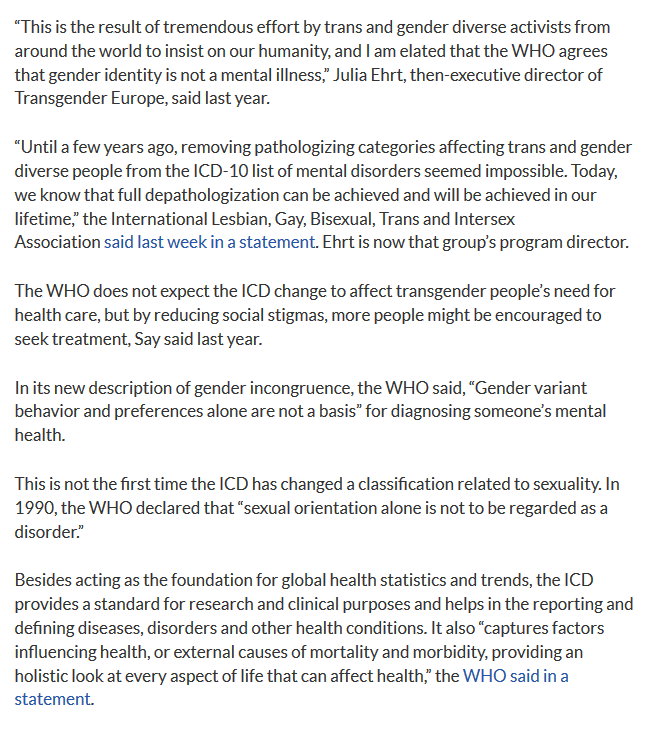Ray Blanchard is an adjunct Professor of Psychiatry at the University of Toronto who specialises in the study of human sexuality, with a particular focus on sexual orientation, paraphilias, and gender identity disorders. In the 1980s and 1990s he developed a theory around the causes of gender dysphoria in natal males that became known as ‘
Blanchard’s transsexualism typology’. This typology—which continues to attract a great deal of controversy—categorizes trans women (that is, natal males who identify as women) into two discrete groups.
The first group is composed of ‘androphilic’ (sometimes termed ‘homosexual’) trans women, who are exclusively sexually attracted to men and are markedly feminine in behaviour and appearance from a young age. They typically begin the process of medical transition before the age of 30.
The second group are motivated to transition as a result of what Blanchard termed
‘autogynephilia’: a sexual orientation defined by sexual arousal at the thought or image of oneself as a woman. Autogynephiles are typically sexually attracted to women, although they may also identify as asexual or bisexual. They are more likely to transition later in life and to have been conventionally masculine in presentation up until that point.
Although Blanchard’s typology is supported by a wide range of sexologists and other researchers, it is
strongly rejected by most trans activists who dispute the existence of autogynephilia [...]
Interview:
Ray Blanchard: I introduced the word and the concept of autogynephilia—the tendency of certain males to become sexually aroused by the thought or image of themselves as females—in 1989 as an extension of the concept of transvestic fetishism. ....
I published my early writings on autogynephilia in specialty journals with very small circulations. I intended them for a tiny readership of clinicians who specialized in the assessment and management of gender-dysphoric patients. However, this work attracted the attention of two individuals who decided to promote it more broadly, one online (
Anne A. Lawrence) and one in a book (
J. Michael Bailey).
These efforts, especially the book, enraged three influential trans women—two of them senior academics—who attempted to get Bailey fired from his teaching position at Northwestern University for writing it. This campaign has been
documented in detail by Alice D. Dreger, a medical historian.
Paradoxically, the efforts of trans activists, then and today, to completely suppress any mention of autogynephilia in public discourse has resulted in an increased public awareness of it. I think the self-defeating behavior of trans activists has persisted because the idea of autogynephilia cuts too close to the bone. ...
Subsequently other strange and unexpected (to me) events befell my notion of autogynephilia.
Modern trans activists reframed transsexualism/transgenderism as a political problem rather than a clinical problem. The flat denial that autogynephilia exists became a canon of modern trans activism, trans activism become a sub-department of the Social Justice Movement, and the Social Justice Movement became a primary combatant in the ongoing, pervasive Culture Wars.
The upshot is that
most trans activists—and, in solidarity, their “allies”—deny that autogynephilia exists. Since most university psychologists, sociologists, and humanities professors are “allies,” the topic of autogynephilia may be omitted from Human Sexuality or Gender Studies courses for a generation. The other side in the Culture Wars (whatever one wishes to call that side) are prepared to recognize the existence of autogynephilia as soon as they learn of it, but they tend to hurl it as an insult at male-to-female trans who offend them. That, of course, is not what I intended when I coined the term 30 years ago. [...]
When I looked at the relative numbers of autogynephilic and androphilic gender-dysphoric males
back in 1987, the autogynephilic cases were already a majority, approaching 60%. The proportion had reached 75% by 2010, and it might be even higher now.
I don’t know of any evidence of significant populations of autogynephilic MTF trans in any non-Western countries. That doesn’t mean such individuals don’t exist. It could simply mean that, for non-homosexual males, the social cost of “coming out” as trans is much higher in non-Western cultures.
I do not think they are the female equivalents of autogynephiles, and to underscore that point I have started referring to them as autohomoerotics. Some of these individuals do develop clinically significant gender dysphoria, and it is well documented that at least a few autohomoerotic gender dysphorics have undergone surgical sex reassignment and were satisfied with their decision to do so.
Until recent times, autohomoerotic female-to-male transsexuals were quite rare.










 Pathetic, and it should make any woman (and hopefully the ones with young daughters too) NOT want be part of that gang. Argh...
Pathetic, and it should make any woman (and hopefully the ones with young daughters too) NOT want be part of that gang. Argh...
